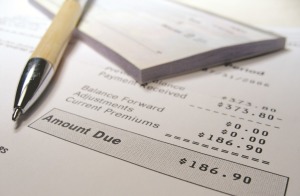I’ve written about why having health insurance is important. I’ve written about how health insurance works. But with the Affordable Care Act (ACA) enrollment period open, it seemed like I should write about how to sort through the many insurance options and to select one that works for you.
Health insurance now comes in metallically labeled levels of coverage. Bronze plans pay about 60% of expenses on average. Silver pays at about 70%. Gold pays at about 80%. Platinum pays at about 90%. And there are also Catastrophic plans that pay less than 60% of average expenses, but these are only available to people under 30 or people with a demonstrated hardship. Frankly, I would avoid the Catastrophic plans if at all possible. Insurance is one of those things that you pay for hoping that you never ever need to use it. But when you do need to use it (and with health insurance, that’s often a surprise event), you want it to actually pay for some things.
If you expect to make regular doctor visits or take prescription drugs regularly, you’ll likely want a Gold or Platinum plan. These cost more per month, but they come with a lower deductible and lower co-insurance. More out of pocket to buy the insurance, but less out of pocket to use it.
If you are healthy and don’t expect to have many medical expenditures, a Silver or Bronze plan may work better for you. These have lower up-front costs, but come with higher deductibles and higher co-insurance. These work well for the healthy and the wealthy. And they definitely work best when paired with a health savings account.
Penn State offers employees the choice of a Platinum plan and an alternate high deductible plan (which I think is Bronze, but I’m not positive). As a middle-aged woman with several health issues requiring prescription medication and follow-up physician visits, I’ve opted for the Platinum plan. I have to pay a lot more per month for my coverage, but in the long run it makes the most financial sense for me, as I pay less out of pocket per year overall. This year I ended up having three unexpected minor surgeries on my hands, and I was very grateful for the Platinum coverage. My out of pocket expense with the high deductible plan would have been several thousand dollars as opposed to the several hundred I paid with my Platinum coverage.
Penn State students also have the opportunity to purchase a Platinum plan at a group rate from Aetna. This student insurance option costs $2,838 per year, or $236.50 per month. If I were an uninsured student with any health issues, I would choose this option without hesitation. It’s less expensive than most Platinum plans on the ACA Marketplace and the coverage is great. But if I were a healthy student needing coverage, I might think about saving money by choosing a Bronze or Silver plan from the ACA Marketplace.
The answer of which plan is best will absolutely vary from person to person. How often do you go to the doctor? What medications do you require? Do you have any pre-existing conditions? Do you expect you’ll need any surgeries? How much money do you have available month-to-month for your premiums? How much money do you have available to cover your deductible and co-insurance? These are all things you’ll need to take into consideration in selecting your health insurance plan. It’s not easy. But it is truly important!




